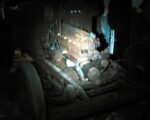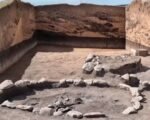In a remarkable discovery, archaeologists have unearthed an ancient Roman construction site frozen in time by volcanic ash and debris. The site, located in Pompeii, provides valuable insights into the sophisticated building methods employed by the Romans, reminiscent of those used in iconic structures such as the Colosseum and the Pantheon.
Unveiling the Construction Process
The excavation area, bounded by Via di Nola to the north, Via Stabiana to the west, and Via dell’Abbondanza to the south, was bustling with construction activity. Among the artifacts uncovered were tools, stacked roof tiles, tuff bricks, and heaps of lime and stones. These materials offer a detailed snapshot of the construction process at the moment of the eruption that buried Pompeii nearly two millennia ago.

Novel Cement-Making Technique
Collaborating with researchers from the Massachusetts Institute of Technology (MIT), archaeologists revealed a novel cement-making process employed by the Romans. Termed “hot mixing,” this technique involved combining quicklime with dry pozzolana and hydrating it shortly before erecting walls. Unlike the traditional method of slaking quicklime in water, this approach expedited construction by rapidly drying the mixture, significantly reducing building time.
Administrative Insights
Roman numerals, likely tallies of the construction site’s accounts, were discovered inscribed in charcoal. These inscriptions provide a glimpse into the administrative aspects of Roman building projects. Additionally, various tools, including lead weights for ensuring vertical walls and iron hoes for mortar preparation, offer further insights into the laborious yet precise craftsmanship characteristic of Roman construction.













